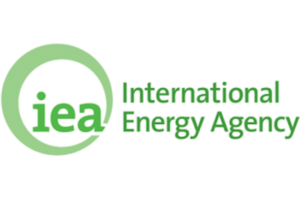The Chief Executive of the Nigerian Midstream and Downstream Petroleum Regulatory Authority, Farouk Ahmed, has raised concern over the country’s slow pace in developing compressed natural gas infrastructure, saying there are fewer than 50 compression stations across Nigeria.
Ahmed disclosed this while addressing participants at the just-concluded NAEC summit held in Lagos, where he highlighted the need to expand investment in alternative energy sources to drive national growth and diversification.
He also mentioned that there are just 3,000 cooking gas refilling plants across the country.
The Federal Government, through the Presidential Compressed Natural Gas Initiative, has been pushing CNG as an alternative fuel to petrol and diesel.
The government has adopted different strategies to promote the conversion of their petrol/diesel-powered vehicles to CNG.
However, many are discouraged by the scarcity of the gas in their immediate environment. The high cost of conversion has also been identified as a major disincentive to motorists.
The NMDPRA boss, who was represented by the agency’s spokesman, George Ene-Ita, said Nigeria must urgently increase investment in gas infrastructure and broaden its energy mix beyond the traditional dependence on fossil fuels.
“As a country, Nigeria is in urgent need of a diversified investment approach in our energy mix to further drive an expansion in the economy beyond the traditional focus on fossils,” Ahmed said.
He lamented that despite the government’s push for gas as a transition fuel, infrastructure gaps remain wide.
“It is important to note that the number of LPG refilling plants in the country is less than 3,000, while the CNG compression station is less than 50 for a country of over 200 million citizens,” he stated.
According to him, closing these gaps is critical to achieving sustainable economic growth, job creation and energy security.
“A constructive approach to developing our other energy sources would have the potential to enable sustained growth in our economy, create jobs and expand the country’s revenue base,” he added.
Ahmed said the Authority was working to attract private sector investments to bridge the infrastructure gap and promote the use of gas as a cleaner, cheaper and more environmentally friendly energy source.
He reaffirmed the agency’s commitment to implementing the National Energy Transition Plan, which promotes gas adoption as a transition fuel towards renewables.
“With Nigeria’s vast gas resources, there exists huge potential for investment opportunities in the upstream, midstream and downstream sectors of the gas value chain,” he said.
Ahmed emphasised that the success of the plan depends on the participation of both public and private stakeholders.
“The pathway to sustainable future growth centres on four strategic pillars: gas as both backbone and bridge; energy security through refining, storage, and supply resilience; decentralised power and clean alternatives; and regulatory certainty, accountability, and people-centred policy initiatives,” he noted.
He called for deliberate efforts to develop CNG and LPG infrastructure across the country to make gas affordable and accessible to households, transport operators, and industries.
The PUNCH recalls that when President Bola Tinubu announced in 2023 that the fuel subsidy was removed, the price of petrol rose from N175 to N870 per litre. To cushion the effect, the Federal Government promoted CNG as a cheaper alternative fuel to petrol, incentivising Nigerians to convert their vehicles to CNG.
In June, the Federal Government said over 100,000 petrol-powered vehicles had been converted to CNG in one year, stressing that it had recorded significant progress in advancing the use of alternative fuel across the country. Oluwagbemi said that as the Federal Government ramped up efforts to cushion the effect of fuel subsidy removal, the initiative had recorded major success in the last year.
According to him, the number of CNG-powered vehicles in the country had risen from fewer than 4,000 to nearly 100,000 in just over a year. “From just seven conversion centres last year, we now have 265 centres nationwide. We’ve also created over 10,000 direct jobs and grown from 20 to 60 operational refuelling stations, with 175 more underway. So far, we have 60 CNG stations up and running, up from just 20 in late 2023. Over the next three months, we plan to inaugurate an additional 100,” he added.
Defending the pace of implementation, Oluwagbemi stated, “Rome wasn’t built in a day. Those who led Nigeria into the fuel subsidy crisis cannot fairly criticise the speed at which we’re addressing it.” However, there are concerns that the latest rise in the price of CNG may discourage its users.
Many Nigerians have complained of long queues at the few stations selling CNG.
But amid the long queues and insufficient refilling stations, the cost of one standard cubic metre of compressed natural gas jumped in September from N230 to N450. While trucks pay N450/SCM, car drivers and commercial drivers still enjoy some subsidies, as they pay N380 for one standard cubic metre of what the government calls a cheaper alternative to petrol and diesel.





